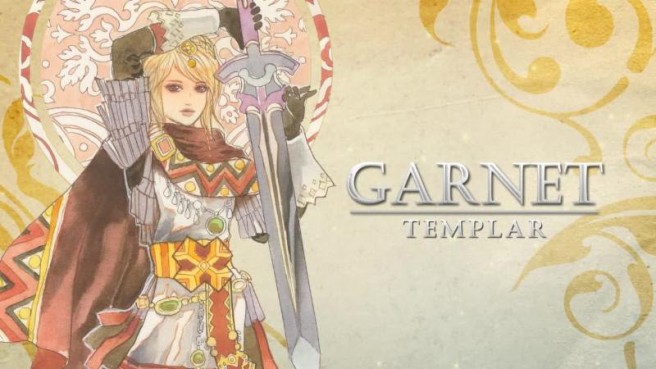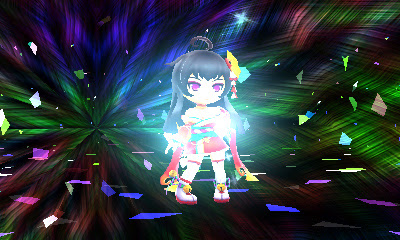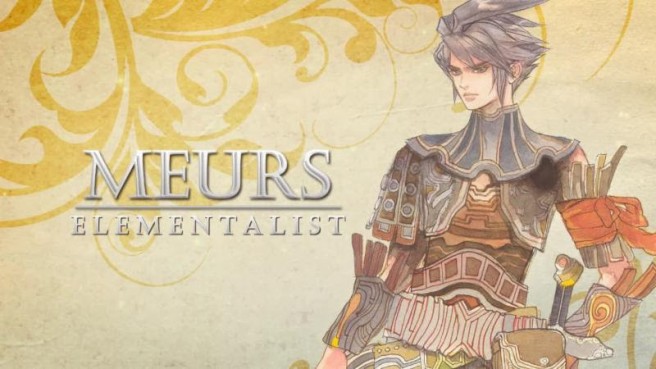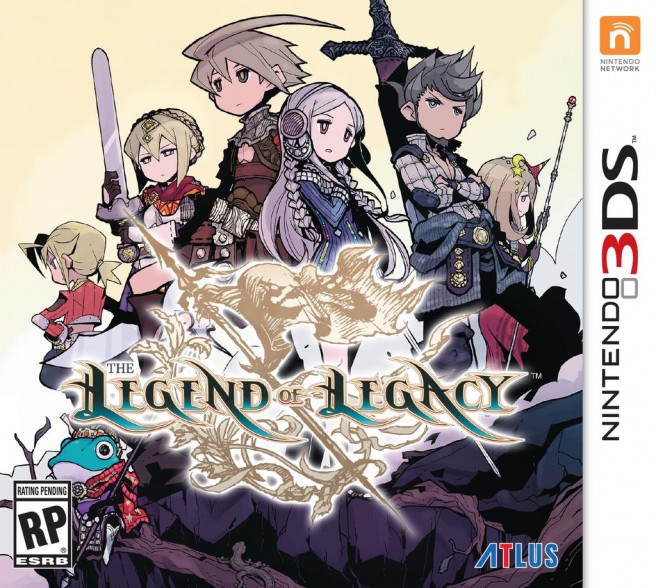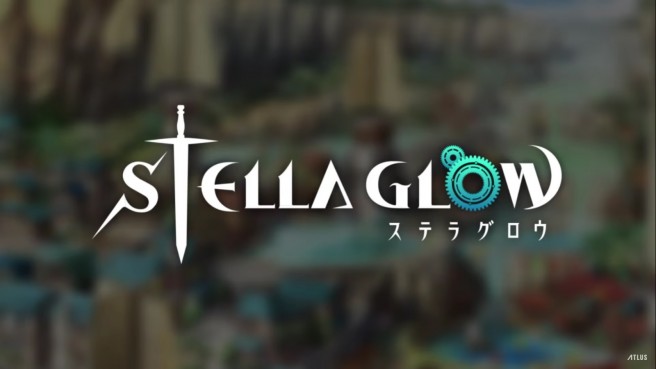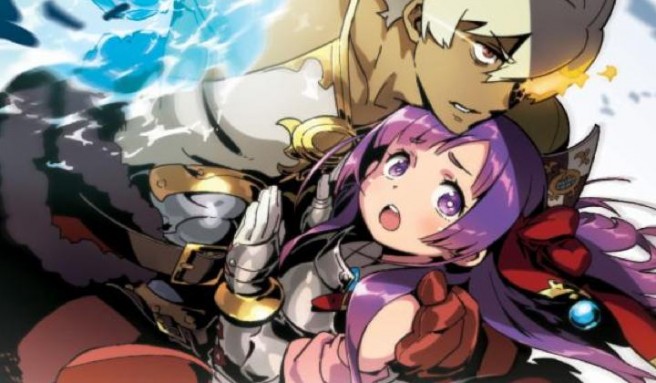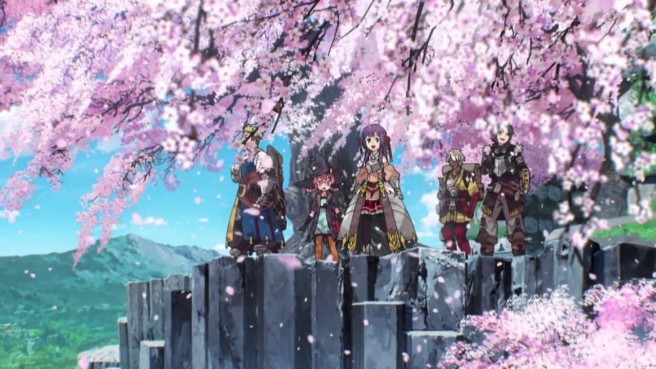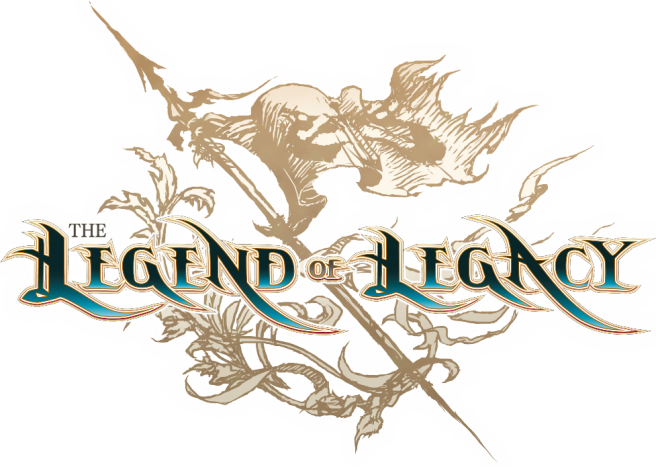The Legend of Legacy trailer introduces Liber and Garnet
Posted on 10 years ago by Brian(@NE_Brian) in 3DS, Videos | 0 comments
Atlus prepared another trailer for The Legend of Legacy trailer, which you can watch below. Today’s video highlights the characters Liber and Garnet.
Here’s an overview of both characters:
Liber
A treasure hunter with a penchant for danger, and also profiting off said danger, Liber is coming to Avalon not for a noble cause, but rather to line his pockets.Being the resourceful adventurer, Liber is one of the strongest supports in the game and excels with bare fists, short swords, and spears. Plus, Liber has a strong affinity for the wind element.
Garnet
A trained templar knight, Garnet is loyal to her holy order, and is exploring Avalon to stamp out the heretics spreading blasphemous rumors about gods returning to the mortal realm.Garnet has balanced offense and defense, making her versatile in party formations. She prefers long swords and shields, and she doesn’t have any elemental affinities at all.
Source: Atlus PR
More: Atlus, FuRyu, The Legend of Legacy
Stella Glow “Witch Tuning” video
Posted on 10 years ago by Brian(@NE_Brian) in 3DS, Videos | 1 Comment
Atlus prepared a new Stella Glow video today which highlights the witch tuning mechanic. View the trailer below, along with an overview of the gameplay system.
If you’ll recall, the game centers around the five witches of the world (4 good, 1 bad…when you’re called Hilda the witch of Destruction, you get pigeonholed, I guess) and their use of song magic. They are the only ones left in the world that can wield this magic, and what good is a song if it’s out of tune?!
That’s why Alto, the game’s protagonist, has the ability to literally “tune” the witches. In doing so, he’ll enter the witch’s heart and have to combat all the anxiety, fears, and nightmares plaguing her psyche.
And because Stella Glow operates on a revolving cycle of Free Time/Mission Time, players will have to make crucial decisions to build bonds with the witches they choose in order to gain enough trust to Tune them.
Atlus is shipping Stella Glow in North America this holiday season.
Source: Atlus PR
More: Atlus, Imageepoch, Stella Glow
The Legend of Legacy – Meurs and Bianca trailer
Posted on 10 years ago by Brian(@NE_Brian) in 3DS, Videos | 2 Comments
Atlus has put out a new trailer to highlight the characters Meurs and Bianca. Overviews of each are below, along with the new video.
Bianca
A young girl with long, ice-blonde hair, Bianca awakens on Avalon with no memory of how she got there. Or anything else for that matter. She is a mild and gentle girl who despite her unfortunate circumstances and loss of memory remains optimistic. Bianca senses that the answers to her memory loss lie deep within the island, and she is determined to recover her identity.Bianca’s base stats imply that she is well suited for a support class. She has affinities for wind and fire elements, and prefers to use short swords, axes, spears, and bows in combat.
Meurs
One of the few remaining elementalists alive. The elements have been gathering to Avalon for unknown reasons, and Meurs is determined to find out why they’ve been so attracted to the island. He communicates with the elements and travels the earth with the spirits as his guide.Meurs also makes for a strong support ally in battle and prefers short swords with a shield. He has a strong affinity for the wind element.
Source: Atlus PR
More: Atlus, FuRyu, The Legend of Legacy
The Legend of Legacy Launch Edition revealed, out October 13 in North America
Posted on 10 years ago by Brian(@NE_Brian) in 3DS, News | 10 Comments
Atlus has revealed The Legend of Legacy Launch Edition. Pre-orders and a limited number of launch copies will include the following items:
– A large, collectible outer box
– A glossy hardcover, 40-page artbook by acclaimed illustrator Tomomi Kobayashi (SaGa series)
– 10-track Soundtrack CD of game music from composer Masashi Hamauzu (SaGa, Final Fantasy XIII)
The Legend of Legacy is due out on October 13 in North America. Pricing is set at $39.99 / CA$49.99. Along with retail, the game will be released on the eShop.
Head past the break for an overview of The Legend of Legacy.
More: Atlus, FuRyu, The Legend of Legacy, top
Atlus on the decision to localize The Legend of Legacy, first-print edition coming
Posted on 10 years ago by Brian(@NE_Brian) in 3DS, News | 8 Comments
In an interview with God is a Geek, Atlus USA John Hardin spoke about the company’s decision to pick up The Legend of Legacy for localization.
Hardin pointed to a few aspects in his response. He brought up Atlus’ close working relationship with FuRyu, its positive reception in Famitsu, and the fact that it looks like the sort of game that people would be interested in.
Hardin’s full response is as follows:
“Legend of Legacy is officially official now. I can no longer leak anything else. We’ve been working with Furyu for a couple of titles now. We are working with them on Lost Dimension already. We have a great working relationship with them. Furyu’s Legend of Legacy caught our eye because it received positive mentions in Famitsu. It was one of the top new IPs that people were looking forward to. I really like it. It’s a properly difficult JRPG and I think fans of the SAGA series in particular will love it. The text is presented in little speech bubbles and it really has that classic JRPG feel to it. It is one of those games that, a couple of years from now, will end up in people’s collections and they will say ‘If you’re a fan of JRPGs and don’t have Legend of Legacy in your collection, you don’t have a complete collection.'”
“It was really fun being able to show Legend of Legacy and Stella Glow at the same time at E3. They are so unashamedly JRPG but at different ends of the spectrum. I think Legend of Legacy has more subtlety to the story and characters. Stella Glow is super easy to get into. Legend of Legacy also has a pretty aesthetic. When you’re walking around in the world, the background scenery pops in and even though the draw distance is small, the effects are a lot of fun and it looks awesome.”
Hardin also teased a first print edition for The Legend of Legacy. There’s no specific news yet, but Atlus is currently working on plans in this area.
“We are working on it. Nothing concrete to say right now but we are working on getting it taken care of. I don’t think there will be a different priced edition like Persona Q’s Wild Cards Edition but we will do the typical Atlus release with a first run printing. It is nice having something physical to go along with the game. We can’t make an infinite supply of these editions and it is the nature of niche gaming. It is super helpful for our fans if we add something extra for them. I know we sometimes get blasted on the internet for not offering enough but we try and do something special every time. The good news is, there is a lot of time for that. Legend of Legacy is coming out in the back half of 2015. We are also looking at what they did with the music release in Japan. (He confuses Legend of Legacy with Stella Glow here). We are working on getting things sorted out and stay tuned for more info. Thank god that both these games are announced. Haha.”
More: Atlus, FuRyu, interview, John Hardin, The Legend of Legacy
Atlus USA uploaded the opening movie for Stella Glow today. Check it out below.
More: Atlus, Imageepoch, Stella Glow
Etrian Odyssey 2 Untold: The Fafnir Knight block size
Posted on 10 years ago by Brian(@NE_Brian) in 3DS, Videos | 0 comments
Etrian Odyssey 2 Untold: The Fafnir Knight launched today in North America. Atlus shipped the title to stores, and also brought it to the 3DS eShop. In case you’re wondering, the digital version requires 7,124 blocks of free space on an SD card.
Etrian Odyssey 2 Untold: The Fafnir Knight out today in North America, full trailer
Posted on 10 years ago by Brian(@NE_Brian) in 3DS, News, Videos | 0 comments
Etrian Odyssey 2 Untold: The Fafnir Knight is out now in North America. Atlus has released the RPG’s full trailer/launch trailer, which we’ve posted below.
Etrian Odyssey 2 Untold: The Fafnir Knight’s first DLC batch is as follows:
Permanently Free
- Yggdrasil Veteran: While there will be new portraits for each class in EO2U, the classic portraits from the original Etrian Odyssey will return as FreeLC for veterans that want to give their party a retro look.
Free Until Aug. 10
- Highlander’s Return: The Protagonist’s class from EOU makes a triumphant return in EO2U! This class focuses on sacrificing portions of their health to obliterate enemies and buff party members. Highlander Grimoire stones and the class is available in Story mode as well! (99 cents/CA$1.49 after Aug. 10.)
- Hidden Hot Springs!: There’s rumors of a secret hot spring inside the snow-covered 3rd Stratum! Can you find the hot springs and dig them up? As an added bonus, completing the quest in Story Mode will unlock special portraits for Arianna and Chloe! ($2.49/CA$3.49 after Aug. 10.)
Paid
- Wanted: Golden Sprout: An easy quest to find the Golden Sprout, which gives players a lot of En when they turn the quest in. Plus, Regina at the cafe can turn this into a dish that raises the party’s chances of getting premium Grimoire stones. ($1.99/CA$2.49.)
Source: Atlus PR
[Review] Etrian Odyssey 2 Untold: The Fafnir Knight
Posted on 10 years ago by Dennis Gagliardotto(@LyonHart_) in 3DS, Reviews | 1 Comment
System: Nintendo 3DS
Release: August 4, 2015
Developer: Atlus
Publisher: Atlus
Author: Dennis
Etrian Odyssey 2 Untold is an epic dungeon-crawling experience in which you and a fixed group of party members embark on a journey. The objective is to complete a century-old ritual by a princess you randomly run into inside the forest close to the town your newly formed guild stumbles upon, High Lagaard. It is here you familiarize yourself with the townsfolk and collect quests to help you on your way to completing this ritual with the Princess. However, while deep in the dungeons heading towards the location where the ritual will take place, you come across a large monster in which you are forced to fight. It is here you stumble into other adventurers from faraway places and transform suddenly into an inhuman monster— wielding the power of a legendary sentient being once known as the Fafnir Knight. From this point forward you aim to figure out exactly why, and how, you were bestowed this power. You must uncover this mystery all while trying to complete this ritual with new friends and allies. Just as you have your own special skills and abilities—so do your allies, each with their own individual strengths and weaknesses. You are the hero of this tale, with your guild and a princess; you embark on a quest to uncover the truth behind the origins of the powerful Fafnir Knight.
Update: Early 2016 – NIS America bringing The Legend of Legacy to Europe
Posted on 10 years ago by Brian(@NE_Brian) in 3DS, News | 6 Comments
Update 2 (8/2): Bumped to the top. NIS clarified on Twitter that the publisher meant early 2016 (thanks Shinun):
When we announced the release period for Legend of Legacy we said Winter 2016, what we meant by this was Early 2016 pic.twitter.com/sMnPpL9XTX
— NISAinEurope (@NISAinEurope) July 31, 2015
Update: Bumped to the top. NIS America made the news official now, confirming a release window of Winter 2016.
Atlus is publishing The Legend of Legacy in North America this fall. Thankfully, we now have confirmation that the 3DS RPG is heading to Europe as well.
A listing on the USK reveals that NIS America is handling The Legend of Legacy in Europe. That shouldn’t come as a major surprise given how NISA has teamed up with Atlus many times in the past!
